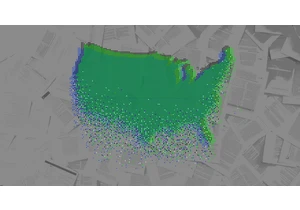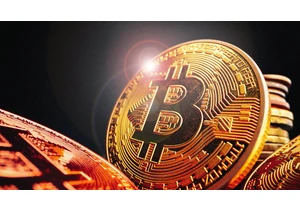On December 12, 1980, a few hours after the opening bell rang on Wall Street, shares of Apple Computer officially began trading. The numbers, by today’s standards, weren’t that impressive.
Apple raised roughly $100 million in the offering (about the equivalent of $383 million in today’s dollars), selling 4.6 million shares at $22 each. Today, Apple (Nasdaq: AAPL) has a market cap of $3.75 trillion and shares trade at around $248. There are a few more shares on the market now too—current outstanding shares of Apple top 15 billion.
The public trading debut of this company, which has risen to such prominence in the tech world, wasn’t viewed as especially important news at the time. The Wall Street Journal ran a story about it, but way back on page 12 of that day’s paper. (Stories about Ronald Reagan’s cabinet picks were the bigger news of the day.)
Individual investors in Massachusetts, meanwhile, were prohibited by state regulators from buying the company’s shares, as they were deemed “too risky” as defined by rules at the time that sought to protect investors from companies not having a strong earnings foundation. (The law mandated that per-share offering prices could not exceed 20 times earnings. Apple debuted at about 90 times earnings.)
Shares were also not offered in Illinois, Wisconsin, Texas, Michigan, Alabama, and Oklahoma.
It sounds truly unfathomable now, but keep in mind that at the time it went public, Apple trailed Tandy Corp. in PC sales.
Adjusted share price
Let’s pretend that you lived in a state that allowed the sale of the stock on this day 44 years ago. And, whether by hunch or a stock tip from a time traveler, you decided to plunk down the $22 ($84.23 in today’s dollars) to buy one share of the company on the day it debuted.
With the number of stock splits the company has rolled out in the ensuing years (three 2:1 splits, one 7:1, and one 4:1), that one share now would be 224 shares. And that $22 investment would be worth $55,552.
Had you really rolled the dice and sunk $1,000 in the company, that investment now would be worth about $2.5 million.
Stock sellers
While today Apple might be a must-have stock for some investors, that was hardly the case when it began trading. In fact, shares of most stocks didn’t regularly show the sort of gains investors see today. In 1980, for example, the entirety of the Dow Jones Industrial Average only increased from $838.74 to $963.99. At the time, the rate of return for a three-month certificate of deposit (CD) was a jaw-dropping 16%, which was a very attractive alternative for some buyers.
Four years ago, Fast Company tracked down some Day One investor groups that had sold shares on IPO day instead of holding onto them. None said they regretted the move.
One investor, who worked with the venture arm of Continental Illinois Bank, which was the largest-selling shareholder on IPO day, said, “We were convinced this was going to be an educational play—computers in schools. We had no concept of a personal computer market.”
That company had invested $504,000 in Apple in August 1978. Its IPO stake was worth $40 million and it sold $5 million of that at the IPO, locking in sizable gains and still holding onto another 1.5 million shares (today’s value: $83.3 billion).
No Apple employees sold any stock on IPO day, largely because of lockup rules preventing it. But given that Apple had seen its sales grow by a factor of 150-fold from 1977 to 1980, some could have been rewarded for holding on a bit longer.
To really see returns, however, they would have had to have been very patient. Apple shares didn’t show any noticeable movement until around 2005.
Jelentkezéshez jelentkezzen be
EGYÉB POSTS Ebben a csoportban


Restaurant industry leaders are excited for

Elon Musk’s anger over the One Big Beautiful Bill Act was evident this week a

Welcome to AI Decoded, Fast Company’s weekly new

When artificial intelligence first gained traction in the early 2010s,

You wake up in the morning and, first thing, you open your weather app. You close that pesky ad that opens first and check the forecast. You like your weather app, which shows hourly weather forec

How the Boomer wealth transfer could reshape global finance.
Born too late to ride the wave of postwar prosperity, but just early enough to watch the 2008 financial crisis decimate some
